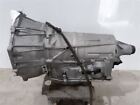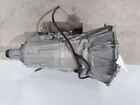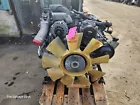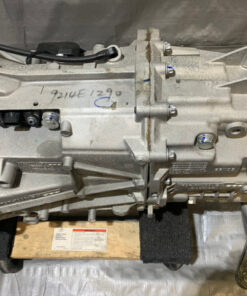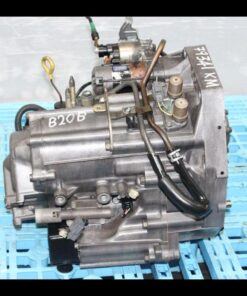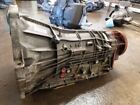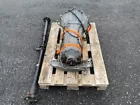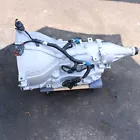CVT 2.0L Automatic Transmission
1,500 $ Original price was: 1,500 $.1,300 $Current price is: 1,300 $.
As drivers demand better fuel efficiency, seamless performance, and reduced weight, a well‑engineered CVT 2.0L Automatic Transmission (CVT) mated to a 2.0 litre engine delivers exceptional everyday usability. This dynamic pairing is common in vehicles like the Toyota Corolla, Honda Civic, Nissan Sentra/Altima, and Subaru Impreza, and offers a smooth driving experience with significant real‑world fuel savings.
As drivers demand better fuel efficiency, seamless performance, and reduced weight, a well‑engineered CVT 2.0L Automatic Transmission (CVT) mated to a 2.0 litre engine delivers exceptional everyday usability. This dynamic pairing is common in vehicles like the Toyota Corolla, Honda Civic, Nissan Sentra/Altima, and Subaru Impreza, and offers a smooth driving experience with significant real‑world fuel savings.
2. Key Features & Advantages
Fuel Efficiency
A CVT 2.0L Automatic Transmission keeps the engine at its most fuel‑efficient RPM by varying gear ratios continuously, maximizing MPG. This can yield better fuel economy than comparable conventional automatics, especially in city driving.
Smooth, Seamless Acceleration
Forget shift shocks or jolts—CVT 2.0L Automatic Transmission ramp up smoothly with no noticeable gear changes, delivering effortless responsiveness ideal for urban and relaxed highway cruising.
Compact, Lightweight Design
CVTs are generally smaller and lighter than traditional automatics. Reduced weight helps improve handling and contributes to slightly better fuel consumption and emissions.
Engine‑Launch Gear Technology (Toyota K120 Direct Shift)
Toyota’s modern “Direct Shift‑CVT”, available with CVT 2.0L Automatic Transmission engines, integrates a physical first gear before switching to belt drive—reducing sluggishness from a standstill and improving launch feel by about 6 %.
Proven in Hybrid Powertrains
CVTs are often used in hybrids for their ability to blend power sources without disrupting engine/reflection RPM, ensuring smooth transitions and efficiency.
3. Limitations & Considerations
Lack of Sporty Sensation
Because there are no measurable gear shifts, CVTs lack the tactile feedback and sound of stepped automatic or manual systems—some drivers describe a “rubber‑band” sensation. Perfect for comfort, less thrilling for performance enthusiasts.
Durability Is Maintenance‑Sensitive
CVTs—especially early designs—can be less tolerant of high torque or aggressive driving and may demand regular upkeep. Nissan systems in particular have a reputation for premature wear if not serviced properly.
Potential for “Engine Roping”
Some users note a delayed response at low throttle inputs—engine RPM climbs before actual speed increases, leading to a disconnect in tactile feedback.
Repair & Replacement Costs
When failures occur, CVTs can be costly to rebuild or replace due to their complex pulley and belt/chain mechanisms. This makes preventative maintenance all the more important.
4. Real‑World Reliability Insights
Nissan’s CVT 2.0L Automatic Transmission
Users repeatedly cite Nissan CVTs as having higher failure rates—some experiencing transmission replacement as early as 60‑80k miles. The common denominator: skipped or improper fluid changes.
Honda & Toyota: Better Track Records
By contrast, Honda models—particularly 2020‑2024 Civics with the CVT 2.0L Automatic Transmission naturally aspirated engine—have had substantially improved CVT durability: reduced belt stress and very low early failure rates. Many owners report exceeding 150,000 to 200,000 miles with only routine fluid changes.
Similarly, CVT 2.0L Automatic Transmission (including the Direct Shift variant) have strong reputations for longevity and fuel efficiency beyond 100,000–150,000 miles.
Owner Testimonies
-
From Honda:
-
From Subaru (chain‑type Lineartronic):
5. Maintenance & Care—Critical for Longevity
Recommended Fluid Intervals
Nissan originally advertised “lifetime” CVT 2.0L Automatic Transmission, but owners report that frequent changes—every 30k–50k miles, or even 20k in severe conditions—are essential to extending service life.
Honda and Toyota guidelines emphasize manufacturer‑approved CVT fluids and honoring suggested intervals for optimal performance and warranty compliance.
Use OEM/Approved Fluid Only
Especially vital in Nissan systems—using genuine Nissan NS‑3 fluid ensures correct friction modifiers and protection. Substitutes can degrade belt life.
Consider Cooling Upgrades
For hot climates or high‑stress driving, installing a transmission cooler or upgraded radiator can reduce operating temperatures by 20‑30 °F and ease belt wear.
Gentle Driving Style Helps
-
Avoid full throttle launches
-
Let transmission fully engage before accelerating
-
Stop fully before shifting reverse/drive
These habits reduce belt stress and heat buildup.
6. Market Fit: Best Use Cases for a CVT 2.0L Automatic Transmission
Compact Sedans & City Cars
Ideal for vehicles prioritizing fuel economy, urban driving, and comfort. Models like the Toyota Corolla 2.0 CVT or Honda Civic 2.0 CVT excel here.
Daily Commuters with Moderate Load
Perfect for drivers who commute in mixed traffic—smooth performance, simplicity, and low noise help reduce driving fatigue.
Drivers Focused on Efficiency & Smoothness, Not Speed
While performance drivers may prefer turbo engines or stepped transmissions, the CVT’s efficiency and smoothness suit people who prioritize comfort and economy.
7. Why This CVT 2.0L Automatic Transmission Is a Great Purchase
-
Built for efficiency and quiet ride, especially with highway cruising and city traffic.
-
Modern technology (e.g. Toyota’s Direct Shift) reduces early lag and improves engagement.
-
Honda and Toyota versions have strong track records for reliability if properly maintained.
-
Routine servicing (fluid/filter change, cooling check) makes long‑term ownership painless.
-
A reliable and well‑designed CVT demands fewer mechanical parts than stepped automatic systems, often translating into simpler servicing.
8. Real‑World Section: Testimonials & Cautionary Tales
Honda Owner (r/HondaCars)
Thousands of Civics with 2.0L CVTs are cruising past 100,000 miles with zero transmission issues, thanks to attentive maintenance.
Nissan Owner (r/Nissan)
Subaru Lineartronic (chain‑driven)
Noted as one of the most durable designs—metal chain CVT 2.0L Automatic Transmission tend to outlast belt‑type systems and produce less noise
9. Purchasing Tips for Buyers
-
Ask for maintenance records—specifically CVT fluid change history.
-
Prefer Honda, Toyota, or Subaru installations if reliability is your priority.
-
Inspect for transmission symptoms: shuddering, noise at idle, delayed take‑off.
-
Negotiate installation of a trans cooler or warranty coverage if climate is hot.
-
Review aftermarket service options that understand CVT care and fluid specs.
10. Conclusion: The CVT 2.0L Automatic Transmission Advantage
If you’re shopping for a smart, efficient, and smooth-driving engine-transmission pairing, this CVT 2.0L Automatic Transmission setup offers:
-
Stellar fuel economy in city and highway use
-
Consistently smooth acceleration without gear shifts
-
A lightweight, compact design that benefits chassis dynamics
-
Proven durability—especially in later-model Honda, Toyota, and Subaru platforms
-
Maintainable longevity when fluid changes and cooling are managed properly
To get the most out of this product:
-
Follow an aggressive, heavy-use fluid change schedule
-
Use approved fluid types and filters
-
Practice moderate driving habits
-
And choose brands with refined CVT designs
Summary Table
| Feature | Highlight |
|---|---|
| Fuel Economy | Excellent—CVT keeps RPM in optimal range |
| Ride Smoothness | Seamless acceleration, no shift shocks |
| Weight/Size | Compact and lighter than conventional automatics |
| Launch Performance | Improved with Toyota Direct Shift; Honda simulates shifts |
| Reliability | Strong in Honda/Toyota/Subaru; variable in Nissan |
| Maintenance Needs | Critical—fluid/filter change every 20‑50k miles |
| Best Use | Daily commuting, smooth city/highway driving |
| Consider If | You want comfort over sportiness |
Final Sales Pitch
Looking to sell this CVT 2.0L Automatic Transmission? Emphasize its blend of modern engineering and practical reliability:
-
Make clear it’s not a sealed-for-life unit—fluid maintenance every ~30k miles is part of its strength.
-
Highlight fuel savings and noise‑free driving experience.
-
Point out the model compatibility—Toyota Corolla or Camry 2.0L, Honda Civic/CR‑V with 2.0L, Subaru Impreza/Outback CVT 2.0L Automatic Transmission—models known for durability.
-
Offer tips or even pre-schedule fluid replacement service, emphasizing that a well-maintained transmission delivers thousands of trouble-free miles.
-
Provide information on warranty or service options, especially if transferable with purchase.
To Conclude
This CVT 2.0L Automatic Transmission is an excellent choice for drivers who value fuel efficiency, smooth daily performance, and modern compact drivetrain technology. While certain brands like Nissan have had reliability issues in the past, when properly maintained—and especially in Honda, Toyota, and Subaru implementations—this transmission choice rewards meticulous care with longevity and comfort.
By positioning it as a maintainable, efficient, and driver-friendly transmission, you can confidently sell its advantages to the right audience—savvy drivers who want value, economy, and a smooth commute.
Related products
Transmissions
Transmissions
Transmissions
Transmissions
Transmissions
Transmissions
Transmissions








